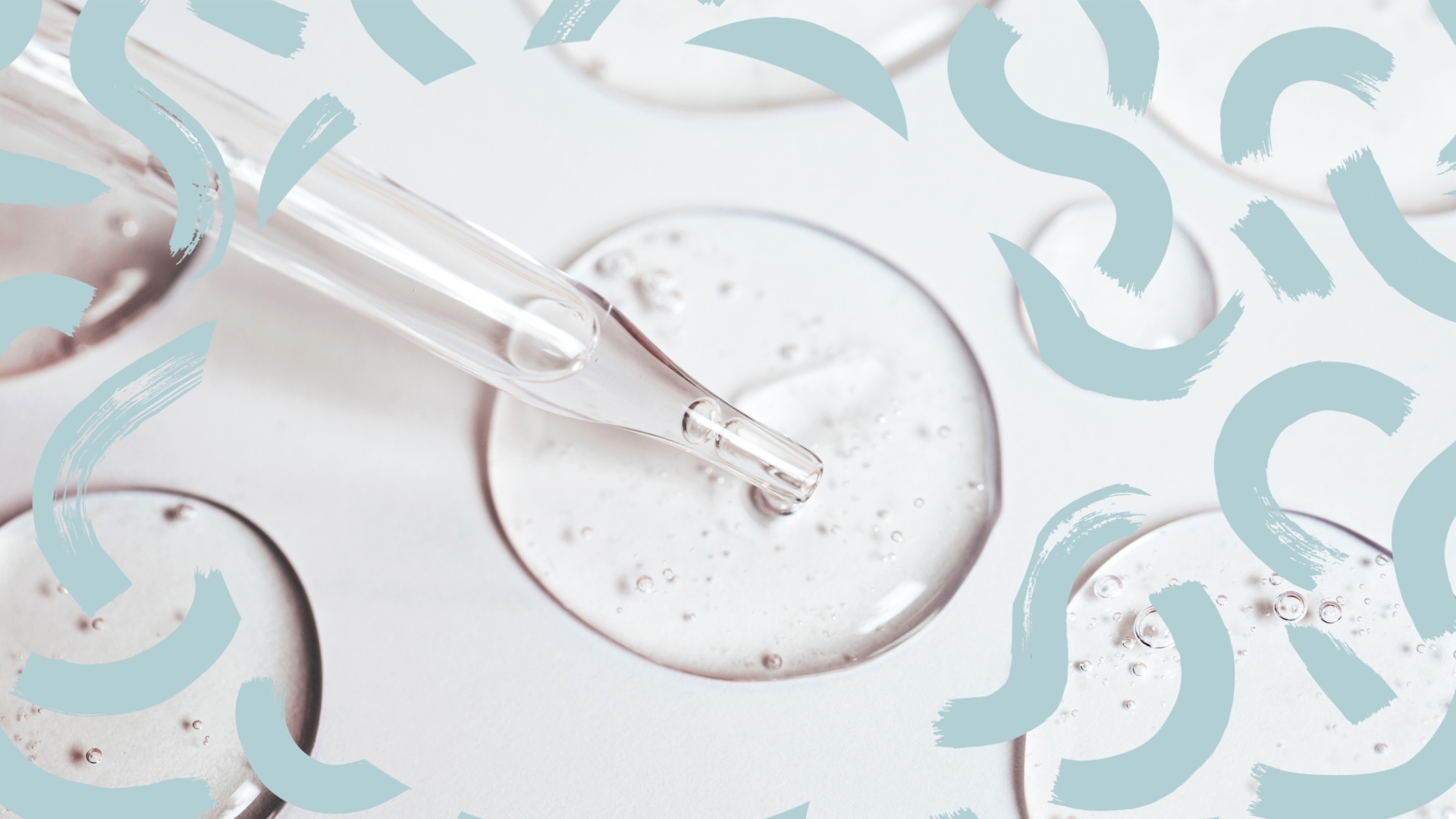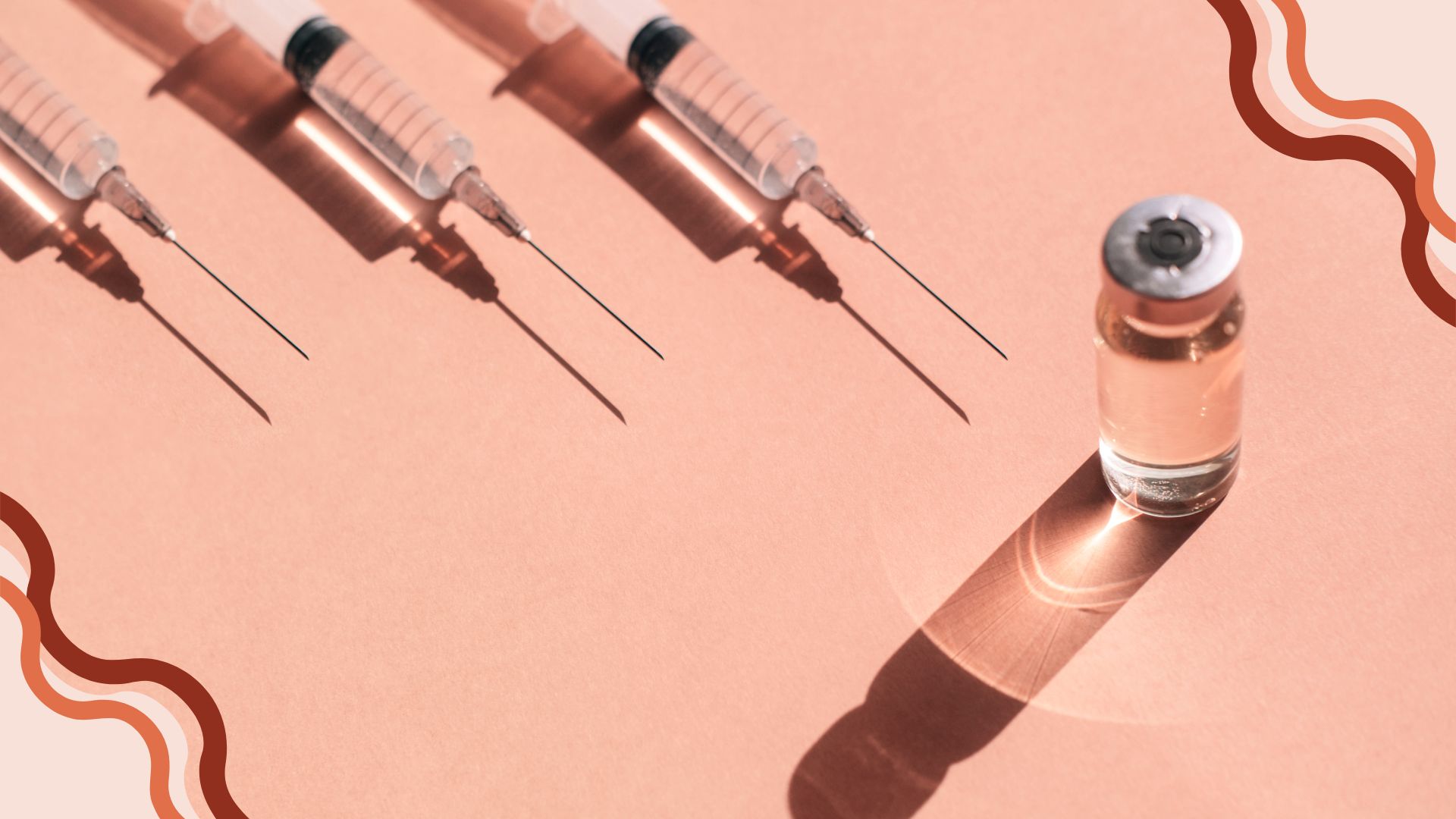
Knowing how to use hyaluronic acid serum could be the secret to unlocking plump, bouncy skin.
That's because HA is a super-hydrator, able to hold up to 1000 times its weight in water. The best hyaluronic acid serum will make a huge difference to dehydrated skin and sagging complexions. "Hyaluronic acid attracts moisture into the skin," explains consultant dermatologist Dr Magnus Lynch. "This helps reduce the appearance of fine lines and wrinkles, making the skin look younger and healthier."
Essentially, hydrated skin will look plumper and bouncier. Don't turn to high-potency or retinoids until you have a pretty long-term, committed relationship with HA - particularly, a serum. Why a serum over a moisturiser or cleanser? Dr Lynch explains, "Serums contain a higher concentration of hyaluronic acid, and can penetrate deeper into the skin. Serums are also more concentrated providing more effective hydration."
It's so important to know exactly how to use hyaluronic acid serum to reap those plumping, hydrating benefits. Here Dr Lynch and other skin experts share advice on how to incorporate it into your skincare routine.
How to use hyaluronic acid serum, according to skin experts
Firstly read up to understand if it's the correct ingredient for you: our all-you-need-to-know guides on niacinamide vs hyaluronic acid and hyaluronic acid vs retinols are great starting points, as well as our beauty editor's guide to skincare acids.
What is the correct way to apply hyaluronic acid serum?
A key element of about knowing how to use hyaluronic acid serum is understanding in which order it comes in your skincare routine. The general rule when it comes to layering products is to go from the lightest textures to the heaviest. Serums tend to be the lightest, thanks to their concentrated liquid formulas, so we'd recommend applying your serum after cleansing, following on with a moisturiser and then your best sunscreen.
As for the actual application, Dr Lynch details the method. "After cleansing, dispense a small amount of the HA serum onto your fingertips or the palm of your hand. Gently spread it across your face, using upward and outward motions. After the HA serum has been absorbed, you can apply your regular moisturiser to seal in the hydration."

Should you wet your face before using hyaluronic acid?
One of the big debates about how to use hyaluronic acid serum is whether you should apply it to a damp face or not. The experts seem to be divided, but to get an idea of a balanced view, we asked three doctors for their take.
Dr Lynch is team wet-face. "Yes, applying HA to a damp face is recommended," he says. "Since HA is a humectant, it draws in water. When applied to damp skin, it can seal in that moisture, enhancing hydration."
GP and Clinical Content Lead at Dermatica Cat Hyatt has a more balanced view. "There is limited evidence at the moment to support applying your hyaluronic acid serum to a wet face," she says. "However, in practice, many people find it promotes further hydration with their skin appearing plumper. If you find this works for you there’s no reason not to apply it like this."
Dr Jason Thomson, Head of Medical at Skin + Me disagrees. "It's actually better to apply hyaluronic acid serum to a dry face," he says. "HA serums are water-based and almost entirely made of water so there's really no need to add additional water for it to be effective. You may actually irritate your skin if you leave tap water on your skin, particularly if you live in a place with hard water," he warns.
Essentially, if it works for you - go for it, but you don't have to wet your face before applying your HA serum. As with all skincare decisions, it's about what works best for you. Personally, my skin can feel a little dry when I apply any serum to totally dry skin, so I find a spritz of my best face mists helps to prep my skin. It's a bit of a bougie extra step, sure - but it's one that works for me.
Our beauty editor recommends...
Is it OK to use hyaluronic acid every day?
Understanding how to use hyaluronic acid serum also means knowing just how often you can use it. Is it possible to overdo it, or can your skin simply never have enough of that hydrating goodness?
"Yes, you can use your every day - or even twice a day if you like," says Dr Thompson. "HA is a naturally occurring substance in our body so it's generally safe and beneficial for daily use."
It'd be very hard to overdo it on hyaluronic acid, so fill your boots (and your pores).
What not to mix with hyaluronic acid?
HA is a pretty unproblematic ingredient - there aren't many things it'll clash with. There are still a couple of ingredients that you should always tread carefully with, though. "Hyaluronic acid is very gentle and generally works well with other ingredients," Dr Lynch says. "However, it is best to avoid combining with AHAs, BHAs and higher concentrations of retinol.
"Hyaluronic acid is a really gentle addition to your routine and reacts well with most other ingredients," agrees Dr Thompson. "If you’re using a retinoid just check the ingredients list of any hydrating serums to check they don’t have other active ingredients that might react with your retinoid."
If your HA serum has other ingredients - like Vitamin C or any exfoliating acids, it's best to stick to just that rather than layering up other actives.
Our beauty editors' favourite hyaluronic acid serums
The budget-friendly buy
The cult classic
Expensive, but worth it







